“The Audio Mechanic” by Jason Finkel: Recording Electric Guitars
In the previous edition of “The Audio Mechanic” I talked about drums. This month we are going to look at something a little more specific and subjective … recording electric guitar amps. I LOVE recording electric guitars.
Since I was little, I have been fascinated by electric guitars. In elementary school I would draw Explorers, Strats, Tele’s, and Flying V’s in the corners of my worksheets. I would watch MTV trying to catalog every type of guitar I saw, which wasn’t easy in the era of hair metal where the guitars were just as outrageous as the hair. Passing music stores to stare at the electrics hanging up, like some far off island I could never reach, was commonplace.
However, by the time I was in my teens, I had found that island with my first electric guitar, a Lake Placid blue Fender Stratocaster that I purchased from shoveling snow during the Pennsylvania blizzard of ’94. While I don’t play too much anymore, my love for interesting tones has never waned. So let’s look at recording amps in a best-case scenario, low budget, and mixing scenario. I’ll even throw in a little A/B between recorded amps and plugin models to see which sounds better and more importantly, if it’s even worth debating.
There are going to be audio clips for this column and I want to discuss how they came to be. My good friend guitarist/singer/songwriter Bob Parins (Of Montreal, Vetiver, Sondre Lerche, Bob Parins) stopped by my studio, 4a, and laid down some guitar excerpts from some of his own songs. I recorded those through a Radial JDI DI, which I am quite fond of, into a Grace Designs mic-pre straight into Pro Tools. I then took the clips to composer/producer/engineer Theo Aronson’s studio and re-amped them with a few different amps and mic combinations using API 512c mic pres to demonstrate some of the concepts I am going to talk about.
FIGURE OUT YOUR SOUND
I think it’s important for a band to have an imagination with their record and to reach for new sounds, but I think it also important for a band — especially a new band — to make a recording that can actually exist in a live setting.
Figure out what your sound is before recording. That means find the right amps and pedals for you, and work on your sound at rehearsals and at home. If you do that, not only will the guesswork be taken out the day of recording, making it faster and cheaper to record; but, when you play live, you will sound like your record.
Though 99% percent of the people who will hear your record will never see you live, the 1% that do will scream your praises all over the world if the two are equally inspired.
From a producer/engineering side, make sure you are always listening to the band’s gear in the live room. Tweak the amps before placing mics. But most importantly always be listening. Knowing what an amp is supposed to sound like is 90% of the battle. Let’s get started.
GUITARS=GUTS
Guitars — and, for that matter, keyboards — that use amps are the guts of the track. They not only add rhythmic elements, but harmonic and melodic elements as well so getting the sound right is paramount to relating the humanity of the song.
It all comes down to preparation for me. I might track a full demo of the song beforehand, whatever it takes to have a vision for the track, and more importantly the record, before we’re in the studio. I’ve made plenty of records where we just recorded parts and parts, each with multiple cabinet and room mics and later tried to arrange each part in the stereo field utilizing some or all of the assets for each part. While that can work, it’s better to have a vision and execute it rather than try to create a concept in the studio on the spot.
Bands coming in with a strong concept can work quickly and toward a vision, while also allowing for new ideas to be quickly placed into their concept. Working quickly also keeps the process fun.
MIC SELECTION AND PLACEMENT
So let’s start talking about actually recording some amps. At this point in my career I don’t have too many rules. I like to think about how the guitar part I’m about to record will fit into the mix and try to record it with that in mind.
If it’s a main upfront part I’ll put the mics up on the grill. If it’s a distant background part, I’ll pull the mics farther back or maybe only record a room mic. Generally speaking, I want to capture the sound coming out of the amp, not create the sound with the gear.
I try to blend microphones that complement each other and give a mostly even, flattering sound. My main pair of choice for most guitar rigs is a Royer 121 and a Neumann TLM 103 or a Neumann FET 47. The Royer offers a featured midrange with a gentle roll off starting around 7kHz, as well as broad dip between 100Hz and 1kHz. The TLM 103 is flat all the way up 3kHz where it raises smoothly up 5dB and stays flat up to 20kHz. The FET 47 is similar to the TLM, except it offers a dip at 8kHz.
Here are the Frequency Response Curves (FRC) for many of the microphones referred to throughout this article:
For me, the blend of the Royer mids and the TLM/FET top end, with the bit of boost from the overlap at 3-7 is perfect. The boost is helpful because it means I’ll use less EQ in that desirable range. Another common pair is the Shure SM57 and the Sennheiser 421.
This a great option for high-gain guitars offering a very present midrange, but not a lot of low mid info to mud up clarity. I’ll add the SM57 to my 121-and-FET-or-103 pair for high-gain guitars to give it a little more bite and clarity.
Check out this A/B vid of Bob Parins playing “Anywhere But Here” on his 1952 Gibson 125, and decide which combination you prefer: the 121/Wunder CM7FET (FET 47 clone) pair or 57/421 pair. Both clips were reamped with a 1965 Fender Bandmaster into it’s original 2″ x 12” cabinet:
As you could see from the pics in the previous clip, whatever mic’s I am using, I always want the diaphragms to be aligned at equal distance from the amp. If you have multiple mics sitting at different distances from an amp, you may get some interesting sounds but it won’t be what it sounds like coming off the cab.
When microphones are at different distances from the sound source, the sound waves arrive at different times, and when played back together can exhibit damaging filtering that cancels out and reinforces different bands of frequencies, hence the term “comb filtering.” If your artist has spent anytime perfecting his tone he is probably not going to be digging your multi mic gumbo on playback.
I also like to face the mic just off the cone. I find using a flashlight angled at the grill cloth to be helpful in illuminating where the speaker actually is, making mic placement much easier. A variant of equally-spaced mic’s on an amp is micing the backside of an open back amp. In this case, one mic is in front of the amp and the other mic is behind.
I try to measure from the cone of the speaker to get the mics as close to the same distance as possible and then flip the phase of the back mic. The back mic will be 180 degrees out of phase from the front mic (two microphones pointed at the same source, facing each other are 180 degrees out of phase and will cancel a large swath of each other out).
Check the pictures and listen to this clip of Bob playing a clip from his track “Your Gone” off his last record Lucky Little Guy with my Stratocaster. In the first example the part is being reamped through a Sears Silvertone combo miked by the CM7 FET and the 121 in the front. In the second example the 121 is moved to the back:
ROOM TO ROAM
Room mic’s are great when an arrangement is sparse, to add depth or to just add subtle dimensional color to an amp. A room mic will almost always sound better than similarly- minded reverb added later [see the SonicScoop article on recording/mixing the band La Dispute for much more on this topic]. Don’t overthink it — almost any position will work. I will walk around the room while the amp is playing and find an area to put the mic that sounds interesting.
Just remember, to get a more distant sound, I recommend micing away from the front of the amp — I like to face the mic against a wall or in a corner high up behind the amp. Check out this clip of “You’re Gone” with both CM7 FET and the 121 in the front, with close mics and a Microtech Gefell M930 as a room mic behind facing the wall:
DON’T FEAR THE GEAR
I tend to use a lot of processing on guitars, ranging from compression, EQ, to healthy amounts of limiting. As long as you have a vision for the sound that complies with what the artist is searching for, I say, “Go for it.”
On a typical guitar track I can use 2-3 EQ’s and 2-3 compressor/limiters. I’m also a fan of adding subtle delay or ambience in the midst of that chain. Again, there are no rules, but here are a few things I like to do on most guitar tracks:
– Listen closely.
– Sweep out unnecessary lows as far up as 200Hz
– Put an EQ bump on main left/right upfront guitars between 150-250Hz(find the sweet spot for the tune)
– Try to EQ out standing room tones of roomy guitars or acoustic guitars that create notes not in the guitar part
-If you need the part to poke out, feature a boost between 1-5kHz
– Try to do all preliminary EQ cuts before your first stage of compression. Guitars are great for pulling out frequencies, and then compressing and having it feel like no surgery took place
– Boosting air frequencies before heavy compression can work nicely. (Vocals too!)
– Use a fast attack, fast release, mild compression to begin to tame super transient guitars
– Recording to tape or even using an analog saturation-style plug-in will limit peak values while raising RMS. This will make you less reliant on a compressor/limiter to do so resulting in less artifacts.
– Listen closely.
SANS AMP?
Now that we have talked about how to record amps, let’s look at setups that don’t utilize an actual amp. Since we live in 2011, there are a bunch of software solutions that model amp heads, cabinets, distortion boxes and delay units old and new.
Most long-time guitarists will immediately dismiss amp plugins as garbage, not worthy of discussion. But certainly, if an amp model can come close, doesn’t it offer a tremendous advantage?
In NYC I frequently have to deal with poor electricity causing annoying hum and buzz. That’s not a problem with a plugin. Not many people can afford a library of amps, or even more than a few. With plugins — even one that only carries a handful of certified models — you have more choices than most studios. And, of course, plugins also offer you a flexibility to create sounds that would be very difficult to replicate in reality. Ultimately, the artist/engineer has to decide what sound they are going for. I’ve found amp models extremely helpful when dealing with bass guitars.
Back to the actual amp world! In the final set of clips, I took Bob Parins’ performance of “Mr. Face”, from his debut solo effort The Kissing Rocks, and reamped it through an Orange AD30TC four times.
Here are the mic combinations (in random order) –121/CM7 FET/57 trio, 57/421 pair, 121/CM7 FET, Amplitube 3 Custom Shop Orange AD30TC 57/421 combo plugin model:
#1:
#2:
#3:
#4:
Listen to all four and decide which you like best or try and figure out which is which. Please post your answers in the comment section below! I’ll go over the results in the near future.
Jason Finkel works between speakers all day in his Brooklyn, NYC mix studio, 4A. Check his Website for contact/info and follow his new music blog This Music Doesn’t Suck.
Please note: When you buy products through links on this page, we may earn an affiliate commission.







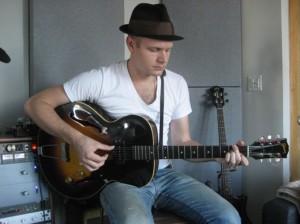
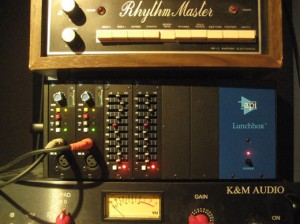
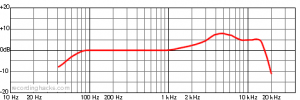

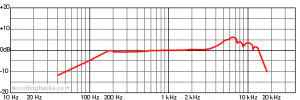

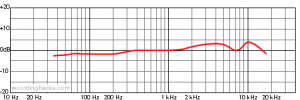
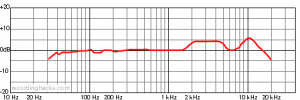
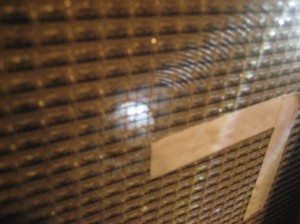
ToneVision Tonstudio
October 17, 2011 at 9:02 pm (14 years ago)i think nr. 1 is the 57 with md 421. is that right?
Jonleaf27
October 18, 2011 at 12:40 am (14 years ago)#2 plugin.
Robert Huskinson
October 18, 2011 at 9:52 am (14 years ago)#4 the plugin?
Jera Cravo
October 18, 2011 at 7:43 pm (14 years ago)The tone is very different, but I would say #1 is Amplitube, #4 is 57+421 and the other two are pretty close…
Anonymous
October 19, 2011 at 4:42 am (14 years ago)Awesome responses! Love hearing why you think what is what!
Davesessionbassist
October 20, 2011 at 3:52 am (14 years ago)#1 = 57/421
#2 = 121/CM7 FET/57 trio
#3 = plugin
#4 = 121/CM7 FET,
joshhunt1
October 20, 2011 at 5:33 pm (14 years ago)#1 – Amplitude
#2 – 57/421
#3 – 121/CM7 FET/57
#4 – 121/CM7 FET
Ask Kaereby
October 24, 2011 at 4:31 pm (14 years ago)I preferred #1, which I guess to be the Amplitube (sadly), #2 could be the trio, #3 the 421/57 and #4 the 121/cm7
Numusic
November 10, 2011 at 5:12 pm (14 years ago)****ANSWERS****
1. Amplitube 57/421 Model
2. 121/CM7 FET
3. 121/CM7 FET/57
4. 57/421
Congrats to joshhunt1 for getting 2 of 4 correct!
Anonymous
November 10, 2011 at 5:13 pm (14 years ago)****ANSWERS****
1. Amplitube 57/421 Model
2. 121/CM7 FET
3. 121/CM7 FET/57
4. 57/421
Congrats to joshhunt1 for getting 2 of 4 correct!